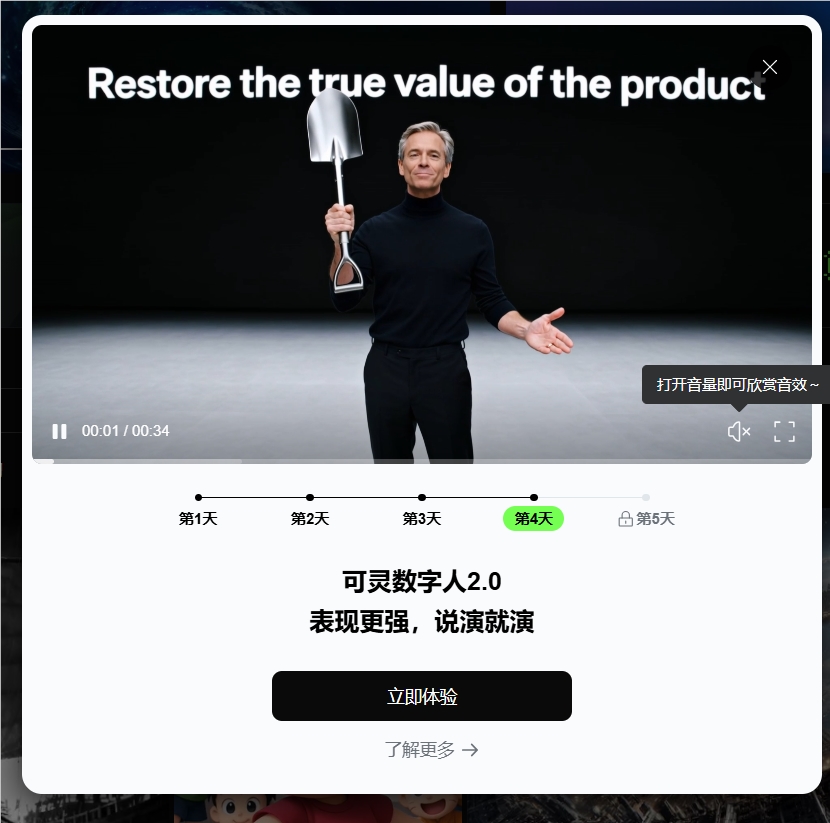The world's first film-grade audio-visual synchronization model focused on character dialogue - Gaga AI has officially made its debut. This innovative tool developed by the Gaga AI team is no longer just simple image animation or lip-syncing, but truly gives AI "actors" a soul: with a single static photo and a prompt, it can generate a 60-second film-level video, covering deep emotional performances, two-person interaction scenes, and multilingual support. Industry insiders say this marks the leap of AI from a "tool" to a "creator," and the threshold for film production will be completely reshaped.
Film-Level "Acting": Does AI Understand the Human Heart Better Than Actors?
The core highlight of Gaga AI lies in its "performance" capabilities. Unlike traditional AI models that are mechanical and repetitive, this tool can intelligently analyze scenes, tone, and emotions in the prompts, generating extremely subtle facial expressions and body language. For example, when inputting "a woman whispering her sorrowful farewell in the rain," the AI not only synchronizes lip movements with the voice, but also captures the subtle glance away in her eyes, the slight tightening of her lips, and even the delicate transition of environmental lighting. Demonstration videos show that the generated clips resemble a real movie close-up: no unnecessary expressions, natural and smooth emotional transitions, as if the AI had attended a film school.

User feedback shows that this "dramatic" level of expressiveness allows creators to instantly become directors. A 10-second short film can achieve a complex emotional arc from joy to sadness, far surpassing existing open-source models like Sora or Gen-3 in terms of character consistency and dynamic precision.
Audio-Visual Integration, One Step: From Photo to Blockbuster with Zero Barriers
The operation is surprisingly simple: upload a portrait photo (supporting half-body or full-body), enter a text prompt (such as including pauses, background music, or action descriptions), and Gaga AI can generate a complete video in one step. No post-editing is needed; sound, expressions, and actions perfectly integrate, supporting multilingual output worldwide, including English and Chinese. Particularly worth mentioning is the support for two-person scenes - users can control the timeline and dialogue allocation of characters, easily creating interactive dialogue segments, suitable for short dramas, product demonstrations, or social content.
In testing, the videos generated by this model have a resolution as high as 1080P, with flexible length extension, and background music and ambient sound effects automatically match the emotional rhythm. This not only reduces the cost of film production, but also opens up new doors for independent creators: no actors, no studios, a phone selfie can turn into a professional-level work.
Industry Impact: The Beginning of a New Era in AI Film
The release of Gaga AI comes at a time when the AI video generation ecosystem is booming. Compared to Alibaba's Wan2.5 cloud integration or Meta Movie Gen's text generation, this model focuses more on "character-oriented" narrative depth, filling the gap in emotional performance in the market. In the future, the Gaga AI team plans to launch the GAGA-1 upgrade version, further improving consistency and camera movement control, which is expected to accelerate the application of AI in advertising, short videos, and virtual idols.
However, this innovation also raises questions: when AI can "act" more subtly than humans, how will the traditional film industry respond? Experts point out that this is not only a technological advancement, but also a signal of creative democratization - everyone is a potential director.
Experience address: https://gaga.art/







